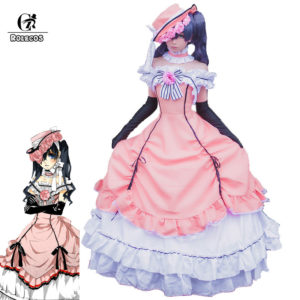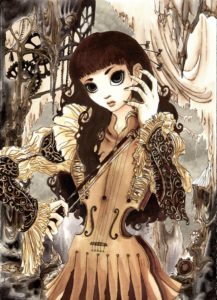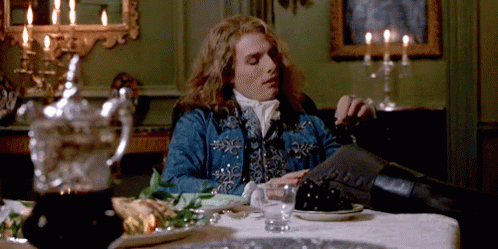Long Lolita Ball Gowns
If you have ever looked at one of the many low quality reseller/dropshipper sites that sells lolita, you probably have seen them. Floor length, lolita “ball gowns” with names that sound like keyword soup.
For those that haven’t, long length lolita dresses are a thing, but they almost never are floor length or the shape shown above. Long length / tea length lolita dresses are usually between about 105cm-125cm in length and they tend to look more like this:
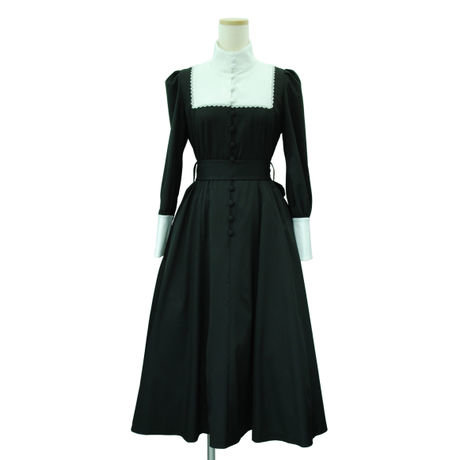
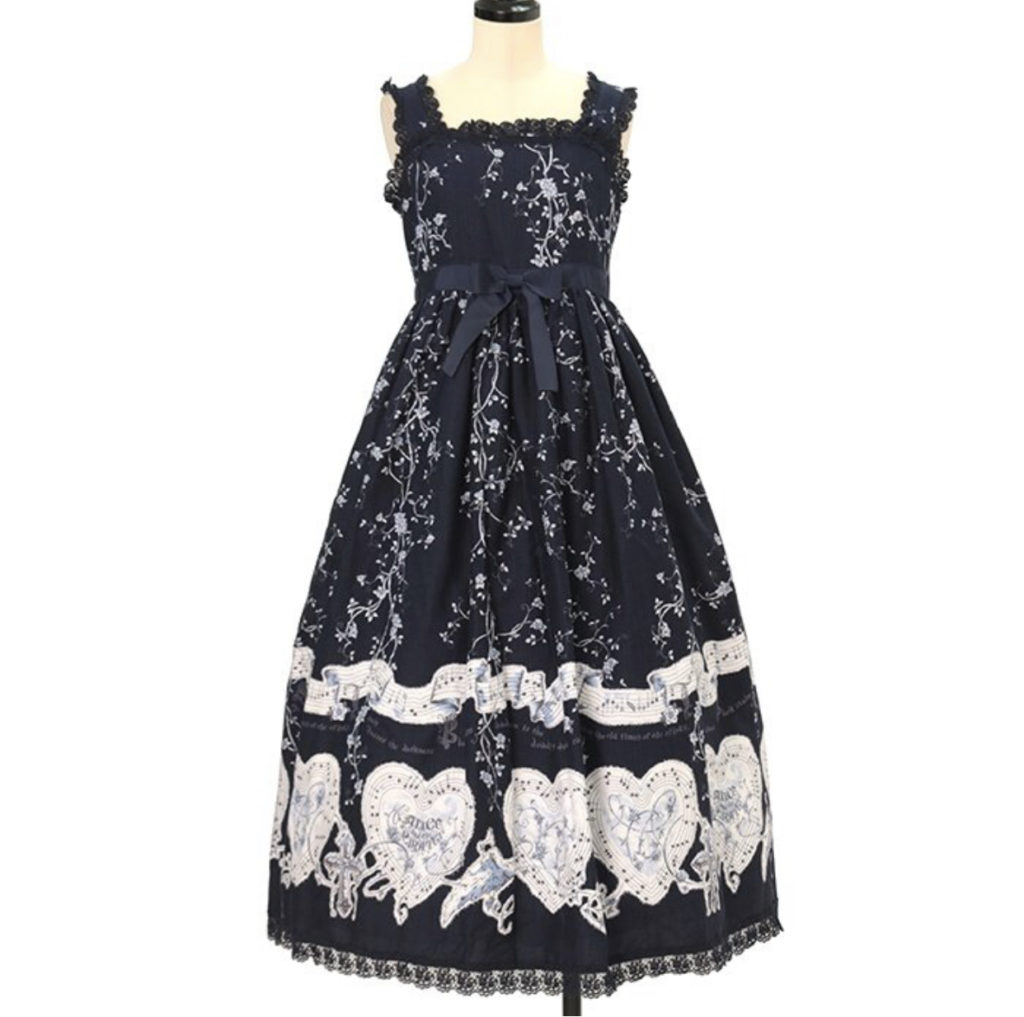
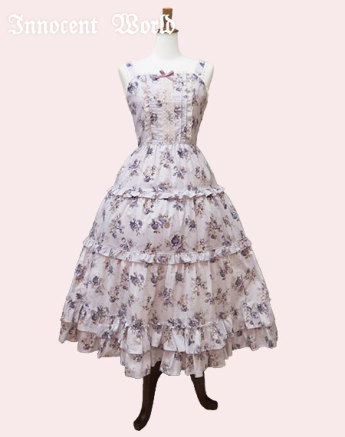
So where do the wacky ball gowns come from? I’m certain that some of you are certain the answer is milanoo, and… well… yes, but, no, actually. The first thing we need to get out of the way is that Milanoo is a taobao reseller / drop shipper and everything they sell is copied off of taobao listings from a mix of legit brands / indie brands and less legit replica makers. For more information see:
I don’t think they are a good one, I wouldn’t buy from them because I think their service is poor quality and their marketing is shady, but they are, essentially, just the middle man.
Which means, these dresses, like every other dress sold by milanoo, comes from a taobao shop.
I’m relatively certain that around 2009 (quite possibly earlier) there was a specific taobao shop that had their lolita items categorized by sweet, gothic, etc. They used photoshop to photoshop out the background of brand stock photos of solid colored items, and the floral patterns in the background corresponded to the section of the shop they were in. The only thing I don’t know is which shop it was (or if they even still exist), because so many shops have stolen their images.
The long dresses don’t pop up on the resale sites immediately, first, we see the regular stolen stock photos being used to sell regular length lolita dresses.
But then something changes. We start to see these ball gowns, and they show up both on a grey background (original image) and on a floral background (the taobao shop that was generated stolen lolita stock photos on floral backgrounds got to them). So they probably aren’t the original work of the floral back ground editing shop, because if they were, in theory we wouldn’t have the non-edited photos floating around too (in theory).
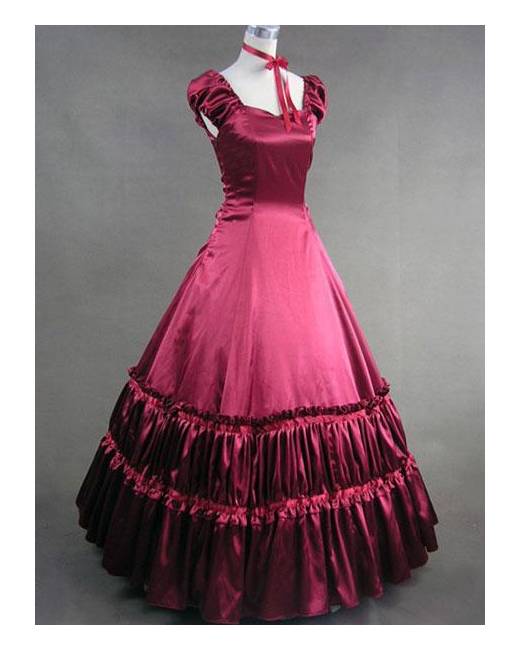
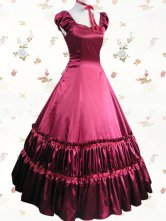
Each one of these dresses is, almost without fail, a case of someone looking at a photo of a brand dress, and then lengthening the skirt and making a “copy” of it. In fact, you can go down the list and match them up to their brand counterparts.
As you peruse this list, I invite you to listen to some thematic music….
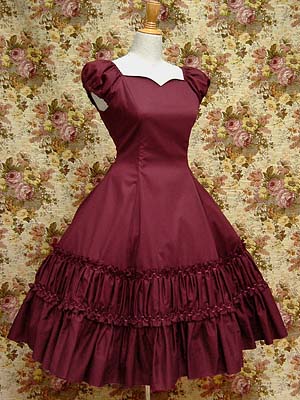
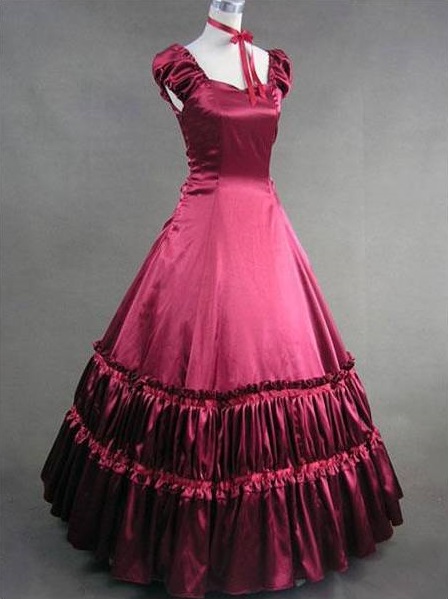
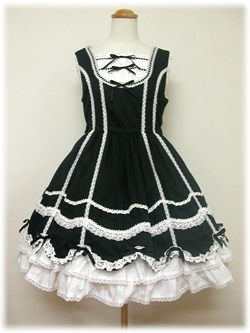

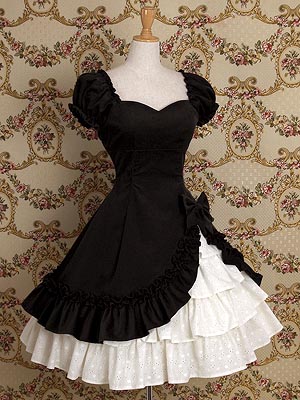
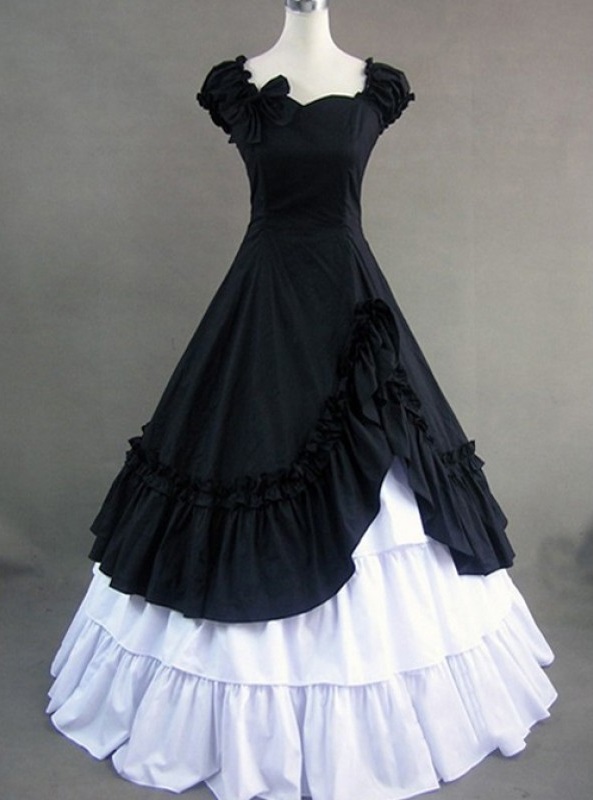
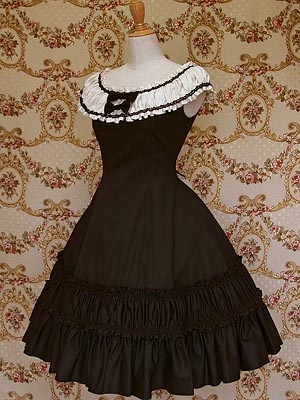
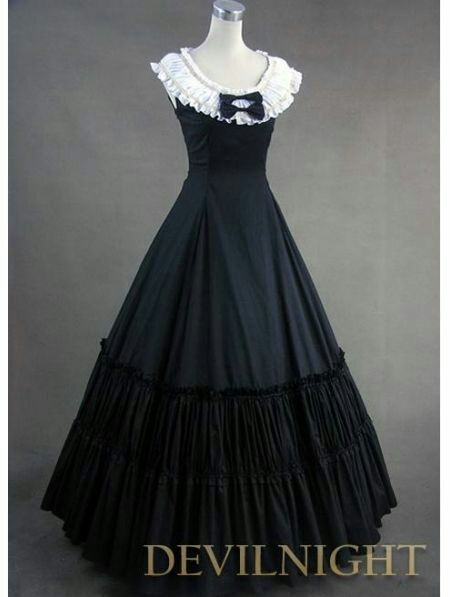
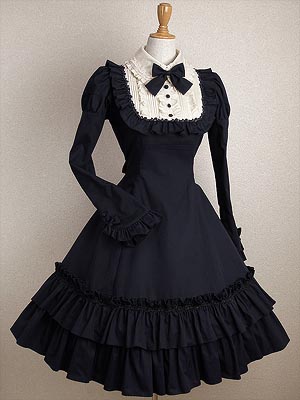
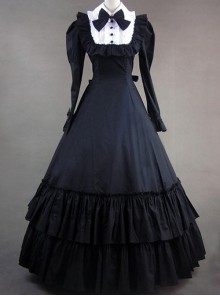
Mary Magdalene – Saint Claire OP
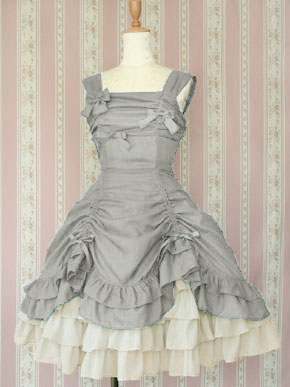
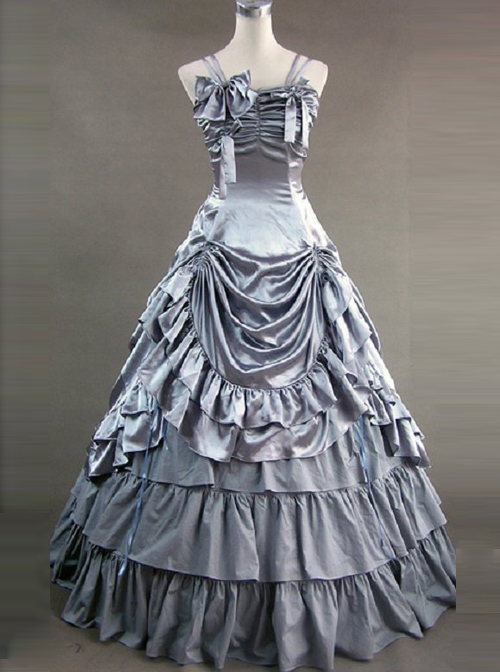
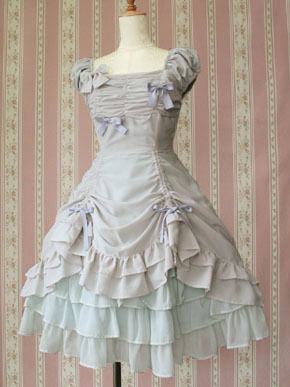

The one thing I can’t figure out is the why. These dresses mainly sell as prom dresses or historical costumes (which they aren’t… at all) or for cosplay (of… what exactly?). The problem is they are all objectively terrible.
I have two main theories on what might have influenced the creations of these monstrosities.
The first, is the anime Black Butler. This specific cosplay dress (see right) started to show up on cosplay sites and reseller sites, often tagged “lolita” and mixed in with other bad examples of “lolita”.
I guess because it was “Victorian” it was close enough?
Black Butler ran from 2008-2010, which means that the prime time for cosplaying it and making copies of the dress would have been during that time frame.
The other theory, which may be the more credible one, is that these pieces were catering to the growing steampunk crowd.
According to google Ngram viewer, steampunk rapidly gained traction starting around 2009 with a peak around 2012/2013. Based on my experience at the time at anime conventions, I would say in the convention cosplay scene, it started trending a little before it picked up as much mainstream traction.
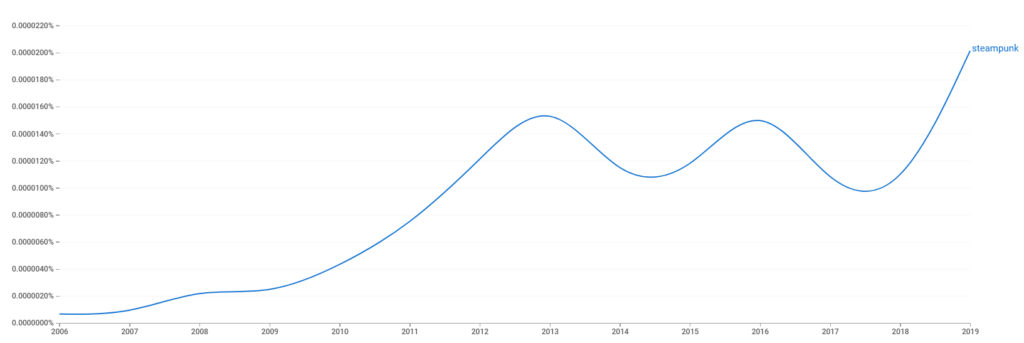
This isn’t to say that steampunk didn’t exist before this, it clearly did (the steampunk entry on wikipedia dates back to 2004, and the name itself dates to the 1980s, while the concept can be traced back even farther), however, this is around the time it became something known to the wider world outside of those who were actively interested in the subculture. This is when Steampunk became a trend.
And when something is a trend, you have an influx of people who want to try it and new people starting in a fashion hobby are prime candidates for buying low quality cheaper copies of things that should be expensive, which is exactly what these dresses are.
The dresses also may have just generally been aimed at the victorian goth crowd, but if that was the case, I would expect to see more varied influence; there is a really heavy focus on ‘lolita, but make it long’ from whoever generated the gray background photos (which, theoretically is the person who sewed these the first time). Cosplay, Steampunk and Lolita, at this time all kinda intersected in who was likely to be interested in them more than mainstream goth did.
A good example of the crossover in interest between cosplay, steampunk and lolita is the horror comic Bizenghast, which started publication in 2005. Bizenghast came out of the Rising Stars of Manga contest hosted by Tokyopop (a US based Japanese manga publisher), and they heavily advertised their contests at anime conventions. Bizenghast visually contains elements lolita, victorian gothic and steampunk. Of the several stories by international authors that TokyoPop published, Bizenghast was arguably one of their most successful, with it being named in the top 10 hits from their first decade by Variety magazine in 2007. Of the titles on that list, the only other international titles I remember ever reading anything of / recognize are Dramacon and I luv Halloween, which both had a chapter in a freebie book I was given by Tokyopop at a con, I think. Bizenghast though, I’ve actively read (and own) some of.
I suppose it’s worth mentioning while we are talking about literature, there is also the whole vampire gothic crowd, but 2005-2008 had just seen the release of the Twilight series (films 2008-2012), which wasn’t nearly as victorian gothic of a vampire series as the Vampire Chronicles series of the decade before. The Vampire Diaries debuted on TV in 2009 (novels started in 1991), and again, we see a lot more modern high school students in jeans in the main series. The dresses also aren’t generally keyworded with the term vampire by international reseller shops, and if that had been the audience originally, you would think they would have included that at least sometimes.
In Chinese, on taobao, in shops that mainly sell lolita replicas the dresses often have names like this:
- 热 维多利亚洛丽塔风格洋装 cosplay 红颜依尚生产部直销一件代发
- 热 维多利亚风格 洛丽塔公主洋装 批零兼顾 生产部直销一件代发
- 公主梦想新上款厂家制作 宴会服拖地款哥特风格 洛丽塔定制拖地款
Where the most common keywords are things like victorian, lolita, cosplay and princess.
The dresses themselves range in release date, and this is to some degree significant, because theoretically, this started back before lolibrary existed (2010). So, there wasn’t a single place you could just go and get a bunch of stock photos of solid colored lolita dresses from many different years. Mary Magdalene’s Eglantyne OP is from 2004 in red with a 2006 re-release, while AP’s Scallop Lace Topstitch JSK was released in 2005, with a red version in 2006 and a re-release in 2008. VM’s Fairy Doll Puff Sleeve OP is from 2009/2010, with the JSK version being from 2008. St Claire is from 2009, Albertine was released in 2005/2008. So, based on that, I think whoever made these dresses first was probably still active in 2009, because otherwise they would have been predicting the future. I do think they probably picked up at least some of their older images from other replica makers, or from the same sources where those replica makers were picking up images, which was likely the brand site’s directly or random old forum posts. Given the color choices the made, I think the photos they were looking at mostly came from the 2006-2009 time period, and I would hypothesize that they likely started sometime in that time frame.
That does line up with both the black butler and the steampunk theories, more or less.
In the end, like with the floral background photos, it’s been too long with too many people stealing them and I wasn’t able to trace the images back to a solid source and say “they are for sure from here”, but I can, with relative certainty say that many of them seem to come from a single source who made them based on lolita stock photos. They were photographed on a gray background, and likely were originally sold on taobao. They were probably active in 2009 and likely started making these dresses 3 or less ish years before that. Floral background versions are stolen/edited photos. The photos have been stolen by many replica shops and the maker of the original pictured long dress probably isn’t the same person who a reseller shop like milanoo or a random amazon shop is ordering from today.
They also probably have relatively low sales, all things considered. Some may have only been made once for the photo, and in some cases the photos are now a decade old. Most of the shops I found selling these types of things on taobao don’t have high sales volumes. Because the ones I found are all are stealing someone else’s photos, they can appear to have a lot of stock without actually putting in any sewing work until they get an order, so even if they aren’t very successful, the overhead cost to them is minimal.
If anyone out there knows where the photos really came from, I’d be very interested to learn. Until then, it looks like it may have to remain a mystery.

